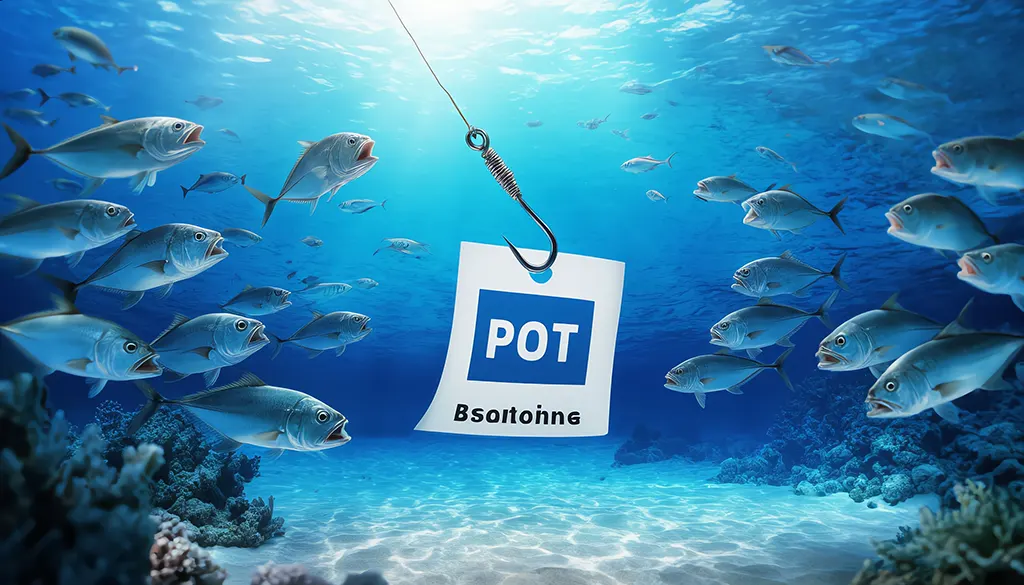Starting a blog in 2025 is like planting a money tree… except instead of watering, you’re force-feeding it patience and strategic planning (and maybe a little bit of fertilizer made of sheer willpower).
First, pick a solid platform like WordPress, because who doesn’t love a little bit of control in their lives? Or go with Blogify if you want it all done for you with AI if you prefer simplicity, because let’s face it, sometimes we all just want some help on our way to success. Then, find your sweet spot, a niche that you love but isn’t too crowded – think competitive eating for hamsters, not cat videos (unless you’ve got a really special cat).
Next, create helpful and fun content that people actually want to read (not just another boring post about the existential dread of Mondays). Don’t forget SEO and sharing your posts on social media to grow an audience. Monetize smartly using affiliate links, ads, or even selling your own products. With some persistence and a sense of humor so strong it could make a tax auditor crack a smile, your blog can make real money!
What Blogging Looks Like For a Beginner in 2025
Blogging in 2025 is nothing like the humble online diaries of the early 2000s. These days, blogs are full-on business hubs juggling multiple income streams like a pro circus act. Thanks to platforms like WordPress.org, Blogify, Wix, and Shopify, bloggers can build sleek, custom sites packed with e-commerce features and monetization tools. You’re no longer just writing posts; you’re running a mini online empire.
AI tools are the new best friends, helping generate fresh content ideas, optimize SEO, and automate the boring stuff, so bloggers spend less time grinding and more time being creative (or binge-watching cat videos, your call). Multichannel content is king now, with blogs often paired with YouTube videos, podcasts, and social media stories to cast the widest net possible. Community building has also stepped up its game: membership sites and private groups create loyal readers who actually chat back instead of just lurking silently. Personal branding is more important than ever because readers want to connect with the human behind the words, not just the facts.
With voice assistants everywhere, voice search optimization has become a must-have skill for bloggers aiming to stay relevant. And if you thought selling products was just for big stores, think again, e-commerce integration lets bloggers become mini online stores, selling everything from digital downloads to physical merch right on their sites. Plus, savvy bloggers use data analytics and AI-driven insights to really understand their audience and fine-tune content for maximum impact. By 2025, successful bloggers aren’t putting all their eggs in one basket; they mix affiliate marketing, ads, sponsored posts, digital and physical products, and services like a master chef crafting the perfect recipe for income.
Picking the Perfect Platform To Start and Make Money Blogging

Choosing the right blogging platform is like picking your blog’s home base, it needs to fit your style, goals, and, well, your tech comfort level. If you’re dreaming of full control, endless customization, and the ability to monetize every nook and cranny, WordPress.org is your powerhouse. Just remember, it’s self-hosted, so you’ll need to grab hosting from providers like SiteGround or Bluehost, and yes, a tiny bit of tech know-how (but nothing a quick tutorial can’t fix). For those who want to dive in without wrestling with code or hosting headaches, Wix and Squarespace serve up an easy way to start blogging. drag-and-drop magic with all-in-one hosting included. No coding required, so you can focus on content and look like a design pro without the stress.
If selling products alongside your blog sounds like your vibe, Shopify’s built-in e-commerce tools make mixing blogging and online store a breeze, no need to juggle multiple platforms. While free platforms like Medium and Blogger might sound tempting for their zero cost, they come with strings attached: limited monetization and control, which can cramp your money-making style in the long run. Also, whatever platform you pick, make sure it’s SEO-friendly with mobile-responsive themes, because Google is still playing favorites with mobile-friendly sites. Plugins are another thing to check out: WordPress wins with thousands of options, while Wix and Squarespace offer fewer but usually enough for most bloggers. Don’t forget integrations, seamless connections to email marketing and social media tools will supercharge your audience growth without extra sweat.
Ultimately, think about how hands-on you want to be: some platforms hand-hold you through setup, others expect you to roll up your sleeves. And keep your future monetization plans in mind, pick a platform that supports ads, affiliate links, and e-commerce so you can switch gears as your blog grows. Choosing your blogging platform wisely means less time troubleshooting and more time creating, promoting, and making that sweet blogging cash in 2025.
|
Platform |
Ideal For |
Pros |
Cons |
Notes |
|---|---|---|---|---|
|
WordPress.org |
Full control and customization |
Thousands of plugins, SEO-friendly, highly flexible |
Needs separate hosting and tech know-how |
Best for serious bloggers who like tinkering |
|
Blogify |
Having AI do the bulk of the work |
Turn more than 50 sources into a post |
Not much theme customization |
Includes hosting in the monthly/annual price |
|
Wix |
Beginners wanting easy drag-and-drop |
All-in-one hosting, no coding required |
Less flexible than WordPress, fewer plugins |
Great for fast setup and decent design |
|
Squarespace |
Creative types and portfolios |
Beautiful templates, integrated hosting |
Limited customizability, fewer plugins |
Perfect for visually-oriented blogs |
|
Shopify |
Bloggers mixing e-commerce |
Built-in e-commerce tools, great for selling products |
Monthly fees, more expensive than others |
Ideal if selling merchandise is a priority |
|
Medium |
Casual blogging |
Free, built-in audience |
No ads, limited monetization and customization |
Good for hobbyists, but not for serious money |
|
Blogger |
Simple blogging |
Free hosting by Google |
Very basic features, outdated interface |
Not recommended for professional bloggers |
Step-by-Step Start a Blog Guide
First things first: pick a domain name that’s short, catchy, and screams your niche. Bonus points if you snag a .com because, honestly, .net feels like dial-up internet in 1999. Head over to Namecheap or GoDaddy to register your shiny new domain. If you’re going the WordPress.org route (the cool kid on the block for serious bloggers), grab hosting from beginner-friendly hosts like SiteGround or Bluehost, they make the techy stuff less painful.
Once you’ve got hosting, it’s time to install WordPress or, if you’re more of a drag-and-drop fan, set up your site on Wix, Squarespace, or Shopify using their easy setup wizards. Next, choose a theme that’s not just pretty but also fast-loading, think Astra, Kadence, or GeneratePress. Google and your visitors will thank you for a speedy site.
Don’t forget the magic touch: install essential plugins like RankMath or Yoast for SEO (because what’s a blog if no one finds it?), Lasso to wrangle your affiliate links, and WP Rocket to keep your site zipping along with caching. Now, build your key pages, About to tell your story, Contact so people can reach you, Privacy Policy to keep things legit, and a homepage that sets the vibe for your blog’s personality.
Before you go live, configure the SEO basics: craft meta titles and descriptions that make people click, set up a clean permalink structure, and submit your sitemap to Google Search Console to help monetize your blog effectively. Nobody likes tumbleweeds on launch day, so whip up your first batch of posts to welcome visitors with open arms and start your blog on the right foot.
Finally, test your masterpiece on both mobile and desktop to ensure it’s optimized for visitors and ready to earn money. Fix any broken links, check the loading speed, and make sure everything runs smoother than your morning coffee to keep your blog content engaging and ready to earn money. With these steps, your blog isn’t just online, it’s ready to rock 2025 and beyond.
-
Pick a domain name that’s short, memorable, and niche-relevant. Bonus points if it’s a .com (because .net is so 1999).
-
Register your domain through providers like Namecheap or GoDaddy.
-
Choose hosting if you go with WordPress.org – SiteGround and Bluehost offer beginner-friendly packages.
-
Install WordPress or set up your site on Wix/Squarespace/Shopify following their setup wizards.
-
Select a clean, fast-loading theme like Astra, Kadence, or GeneratePress to keep visitors and Google happy.
-
Install essential plugins: RankMath or Yoast for SEO, Lasso for affiliate links, WP Rocket for caching speed.
-
Set up key pages: About, Contact, Privacy Policy, and a clear homepage to introduce your blog’s vibe.
-
Configure SEO basics: meta titles, descriptions, permalink structure, and sitemap submission to Google Search Console.
-
Create your first batch of content before launch so visitors aren’t greeted by tumbleweeds.
-
Test your site on mobile and desktop, fix any broken links, and double-check loading speed for a smooth user experience.
Finding a Niche That Pays – Monetize a Blog

Picking a niche you both know and love is like having a secret weapon; you’ll write better, stick with it longer (even when your WiFi decides to take a vacation), and sound less like a robot reading from a script. But beware the lure of zero-competition niches, they often mean zero audience, which is about as useful as a screen door on a submarine. On the flip side, niches so crowded that your blog is a tiny fish in a sea of sharks will make you feel invisible faster than you can say “SEO,” making it harder to earn.
Use Google Trends to check if your niche’s popularity is climbing or plummeting because you want your blog surfing a rising wave, not drowning in a nosedive. Tools like Ahrefs and Keyword Planner are your best friends here, helping you spot keywords that plenty of people are searching for but without turning your blog into a battleground of epic proportions. If “travel” sounds too broad, zoom in on something more specific like “solo female travel” or “budget RV travel” to attract a laser-focused crowd who actually cares about what you say.
Remember, the niches making bank in 2025 include personal finance, health and wellness, tech gadgets, food recipes, and DIY crafts, because who doesn’t want to learn how to save money, get fit, unbox the latest gadget, cook something tasty, or craft a masterpiece? Also, think about your audience’s buying power; niches where people actually spend money on products or services give you a better shot at monetization.
Don’t forget to peek at affiliate programs available in your niche: more programs mean more ways to earn commissions without selling your soul. Take a look at your competitors’ content quality to find gaps or fresh angles you can own, because copying won’t get you far, but innovating might. Finally, before you dive headfirst, write a few posts to see if you enjoy the ride and can reel in some readers. If it feels like fun and gains traction, you’re onto something worth chasing.
Must-Have Tools and Apps For Blog Online
Starting a blog in 2025 without the right tools is like trying to bake a cake without flour; you might get something, but it won’t taste great. First up, Google Docs is your best friend for drafting posts, especially if you’re collaborating or just want to avoid the dreaded “lost document” syndrome. Pair that with Grammarly to keep pesky grammar gremlins from sneaking into your content. When it comes to visuals, Canva lets you whip up eye-catching graphics faster than you can say “Pinterest-worthy,” while Adobe Lightroom helps your photos pop with professional-level editing (no photography degree needed).
For the SEO warriors among us, WordPress plugins like RankMath or Yoast are essential to optimize your posts, but for deep dives into keywords and backlinks, Ahrefs or SEMrush are your secret weapons. Don’t forget Google Analytics, the friendly big brother that tells you who’s stalking your blog, where they’re coming from, and what they’re obsessing over, data nerds, rejoice! Monetization gets easier with affiliate platforms like ShareASale, CJ Affiliate, and Amazon Associates, which connect you to products your readers might actually want to buy.
To keep your loyal crowd coming back, email marketing services such as ConvertKit and Mailchimp help you build and nurture that precious subscriber list. Social media schedulers like Buffer, Hootsuite, and Later let you automate posts so you can binge-watch your favorite shows guilt-free while your content keeps rolling out. Managing affiliate links? Lasso’s got your back. Want to sell products directly? WooCommerce turns your blog into a mini online store faster than you can say “cha-ching.” And because no one wants to deal with hacker shenanigans or losing their hard work, backup and security plugins like UpdraftPlus and Wordfence are the digital equivalent of a trusty security guard and fire extinguisher. Finally, to keep your blog ideas, deadlines, and collaborations from turning into a hot mess, content planning tools like Trello or Notion are lifesavers, think of them as your blog’s personal assistant, minus the coffee runs.
Crafting Blog Content That Hooks Readers

First things first: your headline needs to be a knockout. Think of it as the flashy neon sign on a diner at 2 a.m., it should promise something valuable and make folks curious without sounding like a cheesy clickbait trap. Once you reel them in, don’t drown them in a wall of text. Keep paragraphs short and punchy, because nobody enjoys scrolling through a novel on their phone (save that epic saga for your memoir). Break up your content with bullet points, numbered lists, and subheadings; these little islands of clarity make skimming a breeze for busy readers.
Visuals are your secret weapon. Toss in images, infographics, or videos to keep eyeballs entertained and help explain tricky concepts without sounding like a robot lecture. Speaking of robots, ditch the stiff, overly formal tone. Write like you’re chatting with a friend: sprinkle in humor, share personal stories, and keep it relatable. This makes your blog feel less like a textbook and more like a cozy coffee chat.
SEO is still important, but the trick is to weave keywords naturally into your writing so it flows smoothly; no one likes reading a robot trying to rap. Don’t forget internal links to your other posts; it’s like inviting readers to explore more rooms in your digital house, which keeps them around longer and lowers bounce rates.
Wrap up each post with a clear call to action. Whether it’s asking readers to subscribe, comment, share, or check out your products, give them a nudge on what to do next. And finally, edit like a ninja: cut out fluff, double-check your facts, and proofread to avoid those embarrassing typos that make you look like you typed with your eyes closed. Consistency is king, publish regularly, whether that’s weekly or biweekly, so your readers know when to expect their next dose of awesome. Follow these tips, and you’ll have readers hooked faster than a cat video goes viral.
Getting Your Blog Seen: Tips To Promote Your Blog
Getting traffic to your blog is not rocket science. Blast your posts all over social media platforms where your audience hangs out, Facebook, Instagram, Twitter, LinkedIn, and Pinterest are the usual suspects. Don’t just drop links; use stories, reels, and live videos to chat with your followers like a friend, not a robot, as this builds a successful blog community. This casual vibe helps build trust and keeps people coming back for more, which is essential if you want to start making money.
Start building your email list from day one. Give away something juicy, a free ebook, checklist, or cheat sheet, as a lead magnet. Why? Because owning your audience’s inbox means no middlemen messing with your connection. Guest posting on other blogs or hopping on podcasts is like borrowing your neighbor’s megaphone to shout your blog’s name. Plus, those backlinks boost your SEO, and Google loves backlinks like cats love laser pointers. Speaking of SEO, don’t try to cheat the system. Pick your keywords wisely, optimize your content naturally, and build quality backlinks the old-fashioned way. It’s slower, but it’s legit and long-lasting.
Dive into niche forums, Reddit threads, and Quora discussions, not to spam, but to genuinely answer questions and drop your blog link when it actually helps. People appreciate that. When you need a traffic turbo boost, especially for launches or special offers, consider paid ads on Google or social media. Just don’t blow your budget on ads that don’t convert. Collaborate with fellow bloggers or influencers for shoutouts, giveaways, or content swaps. It’s like a party where everyone invites their friends, your reach multiplies without extra work. Don’t forget to repurpose your blog content: turn blog posts into videos, infographics, or slide decks to catch different kinds of eyeballs and start making money. Finally, track everything with analytics. See what’s working, toss what’s not, and double down on your winners. Promotion isn’t a one-and-done deal, it’s a marathon where you keep tweaking your game plan until your blog becomes the place to be.
Smart Ways to Start a Blog and Make Money
If you think blogging is just about writing and hoping for the best, think again. Making money from your blog in 2025 is more like running your own little online empire, and you’ve got plenty of smart ways to cash in. Affiliate marketing is still the trusty old horse in the race: recommend products you genuinely like, slap on your affiliate links, and earn commissions when your readers buy. It’s like getting a thank-you tip for sharing your favorite things.
Then there’s display ads, Google AdSense, Mediavine, and Ezoic will pay you based on how many eyeballs your blog attracts and how much they click around, ultimately helping you monetize your blog. More traffic equals more cha-ching, so think of it as renting ad space to brands. When you’ve built a decent audience, sponsored posts come knocking, brands pay you to write about their products. Just remember to keep it authentic, or your readers might spot the sales pitch a mile away. If you’re feeling entrepreneurial, selling digital products like ebooks, courses, or printables is a great way to create passive income streams. Once the product’s made, it’s money while you sleep, no coffee required. Prefer physical goods? Dropshipping and print-on-demand let you sell merch without the headache of storing inventory, so you can sell custom t-shirts or mugs without your garage turning into a warehouse.
Offering services like coaching, consulting, or freelance writing can also rake in cash, especially if you become the go-to expert in your niche. Don’t forget about branching out, YouTube and podcasts are booming, and you can monetize these with ads, sponsorships, and affiliate links while giving your audience fresh ways to engage. Email marketing is your secret weapon to nurture fans and launch products with better conversions than just shouting into the void. Also, memberships or Patreon-style support let your superfans pay for exclusive content and a sense of community, turning casual readers into loyal patrons. The smartest bloggers don’t put all their eggs in one basket; mix and match these methods to build a solid, diversified income portfolio. That way, if one stream slows down, you’ve got others flowing strong, which is a great way to make money blogging. In short, your blog isn’t just a hobby, it’s a money-making machine waiting for you to flip the switch.
How much money can bloggers earn?
Many aspiring entrepreneurs want to start a blog as a way to make money online. The potential earnings for bloggers can vary significantly based on factors such as blog traffic, the blog niche, and the strategies used to monetize their blog. For instance, successful bloggers can make money from blogging through affiliate marketing, where they earn a commission for products promoted in their posts. Others might create a blog that generates income through advertising or sponsored posts. Those who want to make money often invest in a blogging course to learn how to optimize their content and grow their blog effectively.
Starting a new blog can be a rewarding venture, especially if you choose a profitable blog theme. Leveraging free blogging platforms or a reliable blog host, you can launch your blog without significant upfront costs. With consistent effort, you can make money with your blog over time. Whether you prefer traditional blogging or want to start a podcast, there are numerous blog post ideas to explore. Ultimately, those who are committed to blogging for money will find effective ways to make money from a blog while providing value to their readers.
Avoid These Common Blogging Blunders

Skipping SEO and keyword research is like throwing a party and forgetting to send invites, then wondering why it’s just you and the crickets on launch day. Consistency is king, so don’t ghost your readers with sporadic posts; the Instagram algorithm definitely notices and punishes flaky behavior. Monetizing too soon? That’s like trying to sell lemonade before people even know your name, you’re basically yelling into an empty room. Also, beware turning your blog into the Times Square of 1999 by stuffing it with ads; visitors will bolt faster than you can say ‘pop-up frenzy.’ Affiliate marketing is great until you start promoting irrelevant or sketchy products, nothing screams desperate salesman louder than that. Don’t neglect your email list either; skipping this is missing out on a golden ticket to keep readers coming back like loyal fans. Legal stuff isn’t sexy, but ignoring privacy policies and disclaimers is like inviting the internet police for a knock at your door. Backup your site regularly unless you want your hard work to vanish in a digital puff of smoke. And please, optimize for mobile, half your audience browses on phones, and a wonky mobile experience is a quick way to lose them. Lastly, perfection paralysis is real: waiting for everything to be flawless before hitting publish just means you’ll never get off the starting line. Sometimes, done beats perfect every time.
Real-Life Blogging Success Stories
If you think blogging is just jotting down your lunch menu, think again. Take Ryan Robinson, for example, who rakes in over $30,000 a month by blogging about blogging, proving that even niche blogs can be cash cows. Then there’s Adam Enfroy, who treated his blog like a startup (not a hobby) and grew it to a cool $1.5 million in just two years. Talk about leveling up! Epic Gardening started as a humble blog but sprouted into a YouTube channel, podcast, and a thriving online store. Work Brighter took a clever route, scaling from hobby to full-time income with savvy email marketing and digital products, email newsletters never looked so profitable. Cup & Leaf turned their tea obsession into a retail business by mixing smart product sales with content marketing, because who knew tea and blogging could be a match made in heaven?
Michelle Schroeder-Gardner from Making Sense of Cents earns six figures through affiliate marketing and courses, showing that you don’t need millions of readers to make serious money. Foodies will love Pinch of Yum, which transformed from a simple food blog into a media company with ads, sponsorships, and even cookbooks. Travel junkies, take notes: The Points Guy built an empire on credit card affiliate marketing and expert travel advice, while Nomadic Matt turned his globetrotting blog into a business with books, courses, and a loyal worldwide audience. And of course, Darren Rowse (aka ProBlogger) turned blogging into a personal brand with multiple income streams and a popular podcast. So, whether it’s gardening, tea, travel, or personal finance, these stories prove that with the right approach, blogging can be more than a hobby; it can be a way to make extra or even a full income blogging.
Frequently Asked Questions
1. How do I pick a blog topic that won’t make me snooze but will still get readers?
Choose something you’re genuinely interested in, because if you’re bored, your readers will be too. Then, make sure people actually search for it online. Think of it as finding the sweet spot between ‘I love this!’ and ‘Google loves this, which can help you earn more effectively!’.
2. Can you really make money from your blog just by writing blog posts, or do I need some secret formula?
Yes, bloggers make an income from writing posts, but it’s not like winning the lottery. If you are looking for more than one way to monetize your blog to actually make money, you’ll want to sprinkle in some ads, affiliate links, sponsored content, or maybe even sell your own stuff. Think of your blog like a garden: you plant posts, water with promotion, and harvest the cash slowly.
3. How important is SEO really? Will it turn my blog from invisible to viral?
SEO is like your blog’s personal hype squad. Without it, your blog might stay a hidden gem. It won’t guarantee instant fame, but it’ll definitely boost your chances. So learning some basics will help your blog show up where it counts, instead of only your mom reading it.
4. Do I need fancy tech skills or a computer science degree to find a way to make money blogging?
Nope! Starting a blog is more about passion and to create content consistency than coding skills. Plenty of platforms make it so simple even your pet could blog (okay, maybe not your pet). Just focus on good content and a bit of promotion, and you’re set to start earning in no time.
5. How often should I post to keep readers coming back without driving myself crazy?
Aim for a steady rhythm that doesn’t send you into a caffeine-fueled panic. Once or twice a week is enough to keep your readers interested and your sanity intact. Quality beats quantity here, so don’t sacrifice your sanity for an extra blog post.
TLDR – Too Long Didn’t Read
Starting a blog in 2025 is a business with multiple ways to make money. Choose a platform like WordPress for control or Wix for simplicity. Find a niche you care about and use tools to create engaging content. Promote your blog on social media, optimize for SEO, and build an email list. Monetize through affiliate links, ads, sponsored posts, or selling your own products. Avoid common mistakes like inconsistency and poor SEO. With effort, your blog can become successful.






Pingback: LeadCreator Review: Lead Generation with leadcreator.ai